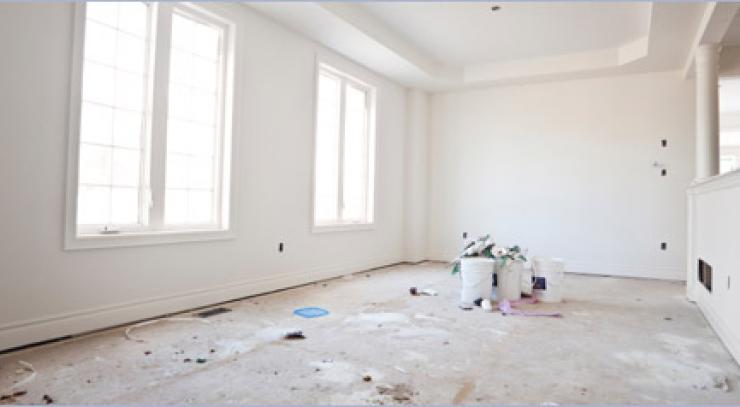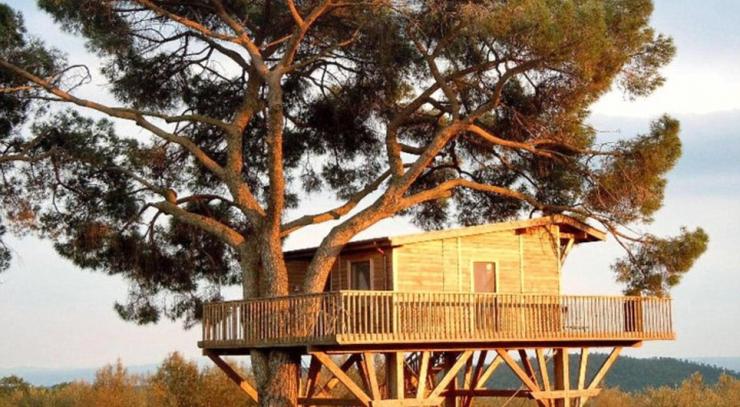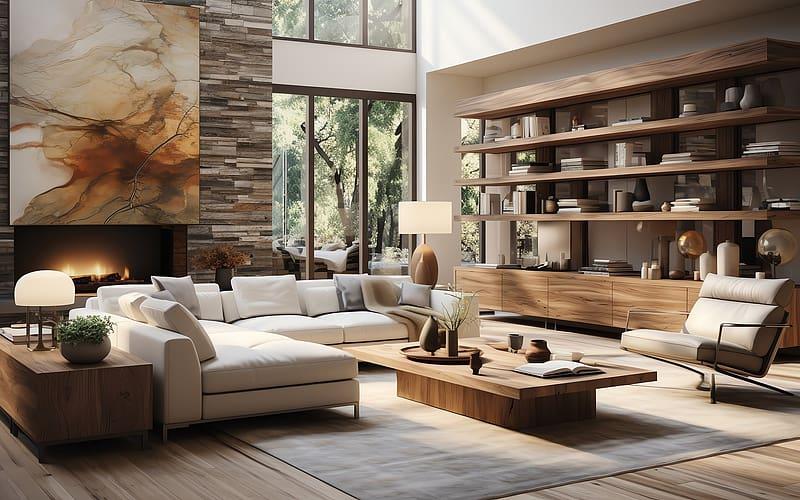Whether you're embarking on a ground-up build or giving your current home a facelift, reimagining our living spaces with innovative design concepts presents an ideal chance to craft environments that are not just visually stunning, but also eco-friendly.
Oak & Orange co-founder and Andersens partner Sarah Jobse shares her insights on cutting-edge interior design trends for a world of vibrant colour palettes, luxurious textures, exquisite flooring options and stylish window treatments. With savvy selections, Sarah demonstrates how to transform a house into a haven.
This year focuses on organic and sustainable design choices, according to Sarah: “It's great to see Aussies getting more tuned into this trend. People are all about crafting interiors that reflect nature while still their style. It's like mixing eco-friendly vibes with your flair.”
Biophilic design, which integrates natural elements into indoor spaces, is at the forefront, using raw and organic materials that connect us to nature. Sarah says it's not just about aesthetics, it’s about ensuring these spaces are as unique as the individual’s eco-friendliness with a personal touch.
Flooring Trends: Light, natural and eco-conscious
Flooring is often the first element that physically connects people to a room and therefore plays a vital role in interior design. In terms of colour, wooden flooring in bleached, light and white oak is gaining popularity.
“These subtle sand-coloured tones provide a flexible base for homeowners to incorporate other furnishings and design elements around them,” Sarah says.
“Andersens’ Timbre range of engineered timber flooring in the Ash Oak colour aligns perfectly with this trend offering both sustainability and touch of everyday luxury. We are seeing favouritism towards wider floorboards, lending a sense of expansiveness to spaces.”
Sarah says Matte finishes on wooden floors are also gaining popularity with added durability and a natural aesthetic that aligns with outdoor textures.
Moving from wooden flooring to carpet, the timeless appeal of light earth-toned hues will continue their reign in creating harmonious and serene interiors: “We'll see a continued affection for earth-toned hues. These colours are versatile and blend seamlessly with various interior styles. Especially in bedrooms,” Sarah says.
The paler earth-toned carpets provide a perfect backdrop, acting as a blank canvas and allowing homeowners to experiment with vibrant wall colours and patterned furnishings, enabling diverse interior expressions.
Also on the rise are textured carpets which add depth and interest to living spaces. Combining natural materials like sisal, jute, bamboo and wool creates visually appealing effects, according to Sarah, yet a similar look and feel with manmade carpets can also be made, alike the effect created in Dream Home 8, using Andersens’ twist pile carpet Byng in Wheat.
“These are often found in soft, warm colours like beige, sand, cream and light straw, which are perfect for rugs and carpets,” Sarah adds.
Window natural textures and earthy tones
As interior design continues to embrace natural materials, window treatments will follow suit, complementing these organic trends. Plantation shutters and wooden blinds, particularly in warm beiges with green undertones or a spectrum of brown shades will not only add depth and richness to a space but also resonate with the move towards a nature-inspired look and feel.
Plantation shutters are popular for their elegance and ease of use, and they also suit Australia’s affinity with the farmhouse, Scandi and Hampton architect styles. Sarah explains that plantation shutters have a long-lasting appeal as they add personality and worldliness and are user-friendly, only requiring just a quick wipe or dusting on occasion.
When it comes to choosing between wooden Venetian blinds and fabric roller blinds, the decision should be influenced by the existing decor and style of each room. The aim is to create a harmonious environment where window furnishings align with the furniture, walls and other elements.
“You could either match the colours exactly or stay within the same colour family. For a more subtle, seamless look, opt for shades that are similar to the wall colour as we did in our Dream Home 8 using Andersens’ Sanctuary Block-out Blinds in the colour Plaster. However, if you're looking to create contrast and make your window treatments stand out, choosing a distinct yet complementary shade is key,” Sarah says.
It's essential to consider the overall balance of the room when selecting contrasting colours for window treatments, according to Sarah, who recommends avoiding complex patterns or bright shades in already busy rooms. Sarah reminds us that light-filtering window furnishings can also cast coloured light into the room, so it's worth considering choosing colours that coincide well with the room's complete palette.
“Remember, interior design trends are just a starting point, not strict rules. This year, we're innovating with colours, textures, and materials and encouraging homeowners to create a home that truly reflects their unique style and personality,” Sarah says.

























